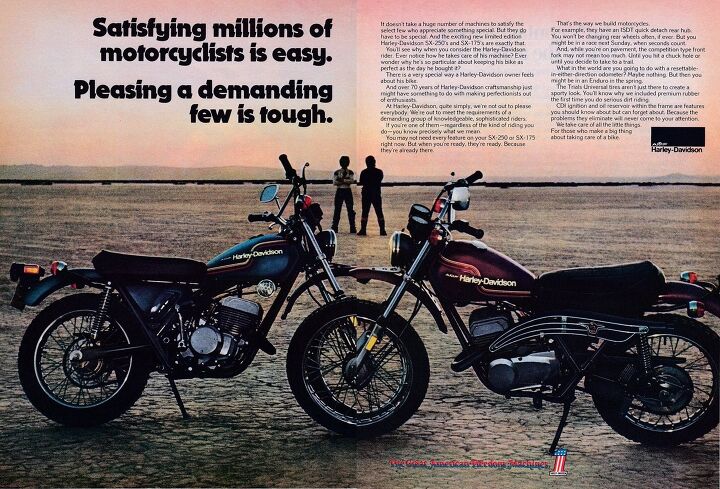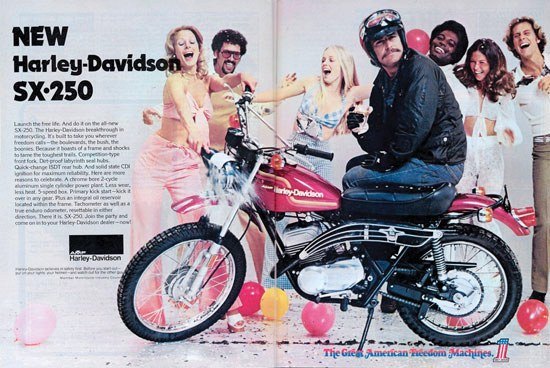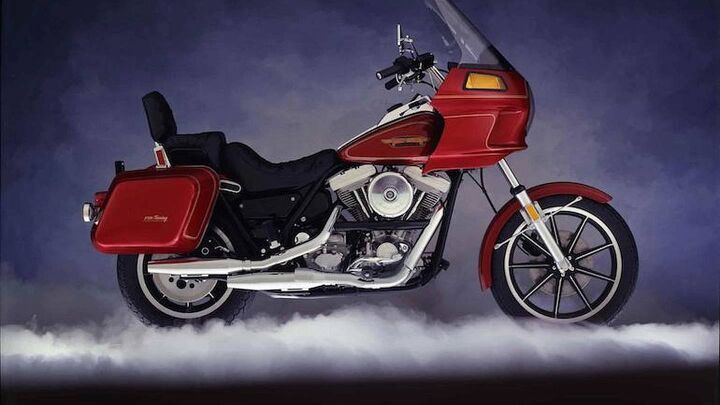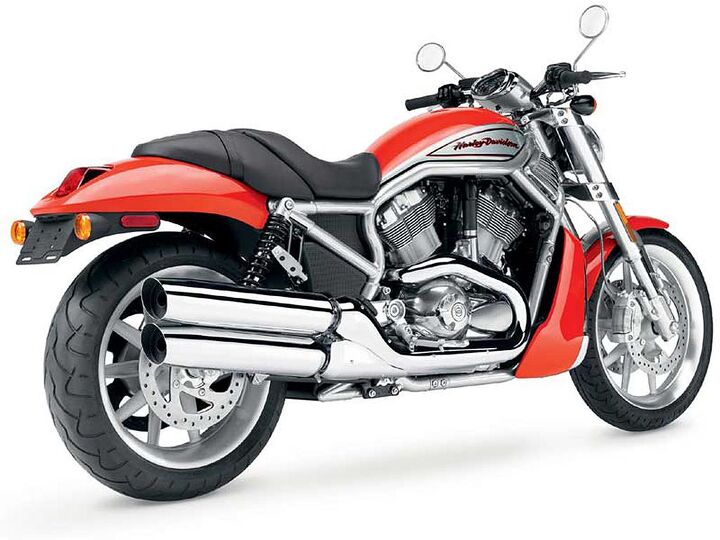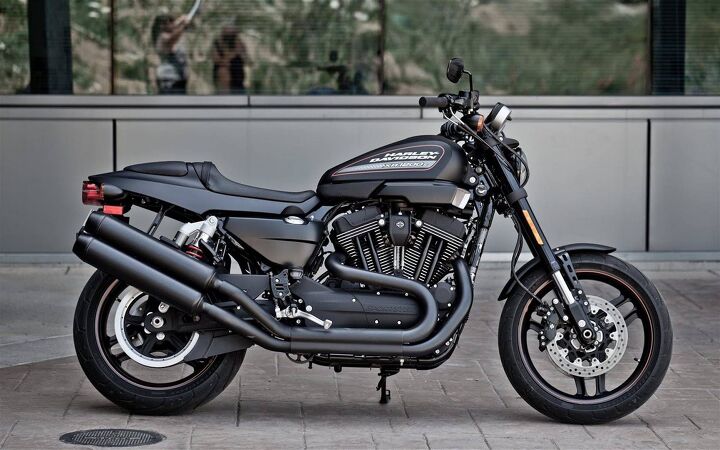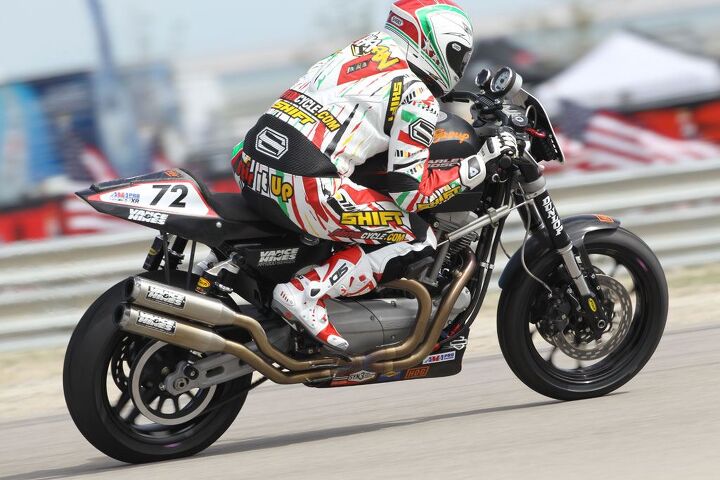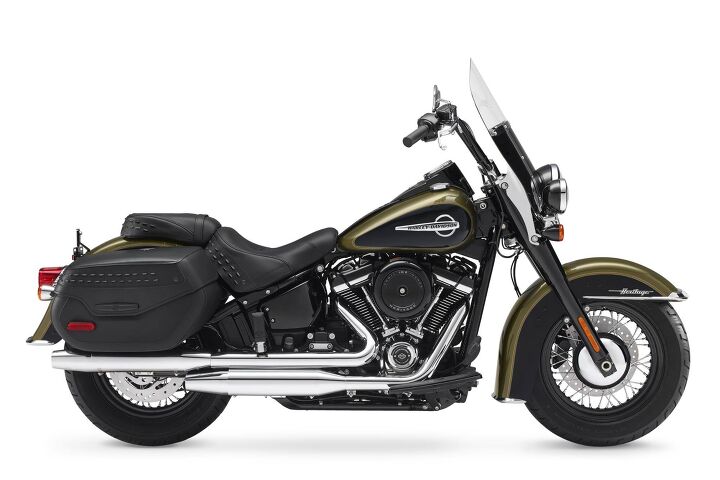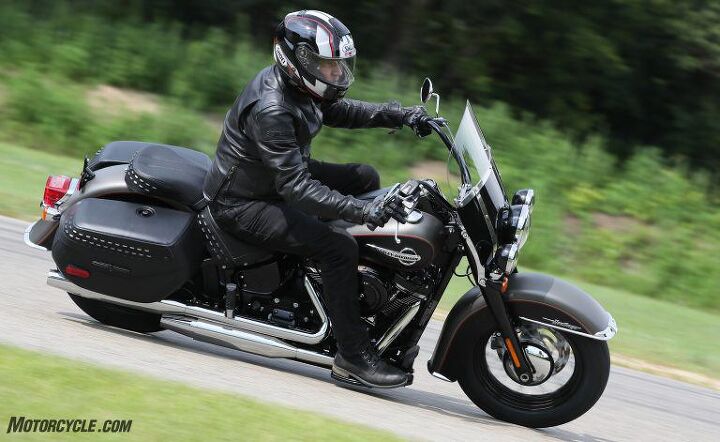Picking out underrated Harleys is tough, sort of the moto equivalent of writing up the five least-attractive Playboy centerfold moles, the five least-cute puppy breeds, the five least-popular iced beverages at the Death Valley Golf Club in August. Even the most ignored Harleys have their own loyal and possibly violent contingents. But fearlessly tackling this type of project is why they pay me the big money. And thanks to the miracle of social media crowdsourcing, it actually winds up being kind of fun. I learned some stuff. Sadly, none of my FB friends are much older than I am, so we’re not going all the way back to 1903 to pick five. We are going back to 1974 to kick things off.
1974 SX-250
I’d forgotten all about these until former Cycle World/ Motorcyclist EiC Brian Catterson jogged my memory. In 1974, all the colorful multi-line Japanese dealers were veritable candy stores, but my prepubescent self did not know where a Harley dealership even was. Harley was primed for success here, since it already owned half of the Italian Aermacchi factory. That Italian company’s old-fashioned overhead-valve four-stroke Singles had been powering H-D’s Sprint street machines since 1960. The swingin’ baby-boomer ’60s were when motorcycles really took off in America, with the 1968 Yamaha DT-1 250 turning the spark into a conflagration. “Enduros” were all the rage, and H-D jumped in in 1973 with a fresh Aermacchi two-stroke powered SX125. Next came the 1974 SX175 (above, left), and then the SX250 (same bike bigger bore).
Weighing in at about 275 pounds, the SX was a bit heavier than the Yamaha, but it had all the right components, including oil injection (oil was carried in the steel backbone tube), and even some cool features like a quick-disconnect rear wheel. It could’ve been a contender, and if anybody ever asks you if a Harley ever won the Baja 500, the correct answer is Yes: With Bruce Ogilvie and Larry Roeseler, who won the motorcycle class on an SX in 1975.
Word is there were some reliability issues, but that was par for the 1974 course. The bigger problem seemed to be that H-D dealers mostly didn’t know what to make of the SX when they weren’t outright hostile toward it. And just like me, potential buyers (or showroom droolers in my case) were just not conditioned to think H-D when shopping for an enduro in the middle of the first wave of the Japanese small-bike invasion. Many of the H-D people I saw in that winding-down Vietnam era were downright frightening. Five years after it appeared, the SX-250 was no more.
1983 FXRT Sport Glide
1981 was the year Willie G. and a group of H-D execs scraped up the funds to buy the Motor Co. back from a foundering AMF. They needed something new, they needed it fast, and they needed it not so expensive. The result was the FXR. Circa 1982, the FXR Sport Glide II appeared, with the old Shovelhead engine ensconced in a new vibration-isolating rubberized tri-mount system adopted from the FL touring family, with much input from guess who? Erik Buell. The new chassis was built around a stronger, more rigid frame than any that had come before: Suspension from Showa of Japan, triple disc brakes and a Sportster front end… “Making it handle was a fun project! Lots of data collection to figure it out,” says Erik. The FXR is still spoken of in reverent tones today.
The one you want, according to people whose judgment is impeccable, Costa Mouzouris, would be the one with the “T” for Touring tacked onto its designation, and preferably a 1984 or later model. That’s the year the new, all-aluminum 1340cc Evolution motor took over from the old cast-iron-cylinder Shovelhead.
In ’84, the FXRT was ahead of its time, with air-adjustable suspension (35mm Showa tubes in front with anti-dive!, and a pair of linked air shocks at the rear). At some point shortly after the Evo arrived, belt final drive was added, and legend has it that a skilled pilot on an FXRT sport-tourer was capable of surprising freshly minted sport riders on their amazing new Honda VFRs (which I for one was way more interested in at the time). Some people were saying it.
As a reminder of the fate Harley had just escaped, the big air scoops in that fairing are there because it was designed for the radiators that would’ve cooled the Nova project H-D abandoned immediately upon parting with AMF. Harley traditionalists of the time reportedly poo-pooed all the FXRs as being too sporty and even Japanesey, but the FXRT had a ten-year run before its plug was pulled. Now, all the FXRs are objects of great desire among the Harleyscenti.
2006 VRSCR Street Rod
One ride on an original V-Rod, circa 2002, was enough to put me off my feed and damn the subsequent ones by association from then on. The first one forced your body (my 5’8” one anyway) to assume the shape of a bivalve mollusk, reaching way forward to the grips while your feet needed to also reach way forward to the pegs; I didn’t have quite enough leg to bridge the gap. And the whole deal was low enough to have you invoking J. Prufrock, feeling like a pair of ragged claws, scuttling your footpegs round every corner.
But Harley got it right in 2006, with the VRSCR Street Rod. First they boosted the Porsche-designed DOHC 1130cc 60-degree fuel-injected V-Twin to 120 horsepower and 80 lb-ft. torque (though power was never the problem). More critically, they added a four-inch-taller seat, a nearly flat handlebar, and mid-mount footpegs. Now we’re leaning slightly forward with feet directly beneath us, as God intended, on a bike with much better cornering clearance thanks to an inverted 43mm Showa cartridge fork up front (a first for H-D) and longer rear shocks. It was the best sportbike Harley had made to date (maybe it still is?) as well as a comfortable high-performance standard power cruiser suitable for all occasions.
So good, in fact, buyers ignored the Street Rod in droves. And so it was dropped after 2007.
2006 Harley-Davidson Street Rod Ride
2011 XR1200X
I apologize if our sporty bike bias is showing here, but it is what it is. Harley sold the original XR1200 in Europe only for the first year of its existence, beginning in 2008, maybe because the US market had just roundly rejected the Street Rod above? The sporty standard market segment was always more profitable across the pond anyway, and the earlier Sportster Sport (our second-favorite non-Buell Sportster) hadn’t set any sales records either. Or, maybe H-D just wanted to tease with this iconically American homage to its dirt-track dominating XR750 racer?
By 2009, the bike was for sale in the US too, and by 2010 it had spawned its own roadrace series, with help from Vance & Hines, that would run for five years. I think our own Trizzle was in that, as were a few other magazine editors (as was H-D’s wily PR guy Paul James, hmmmm…).
Racing The Harley-Davidson XR1200 Series
The XR was as good a streetbike as you’d imagine if you gave the Sportster higher compression, 90 claimed horsepower and a 7000-rpm redline. Also, great standard-bike ergonomics and genuinely good suspension. The XR1200X took it one step further, with the same Showa 43mm Big Piston Fork first seen on the ’09 Kawasaki ZX-6R. Also fully adjustable 36mm Showa shocks out back, new floating brake discs (squeezed by the same Nissin four-piston calipers), and murdered-out paint.
You didn’t have to be a Harley guy or a Sportster guy to like riding the XR, especially the X, though either one will do. Which is, I’m gonna guess, precisely why it didn’t sell so great either. A theme seems to be emerging. While Harley’s other veteran Sportster 1200s are still batting lead-off for the Milwaukee team, the XR1200 was dropped from the roster after 2013. Sad.
2009 Harley-Davidson XR1200 Review
2018 Heritage Softail
Your Street and Road Glides make up the bulk (and how) of Harley’s Big Twin sales, but that’s a shame if it has people overlooking the same Milwaukee 107 and 114 powerplants that are also available in the completely overhauled-for-2018 Softail line. Specifically, several people on the JB Facebook feed extolled the praises of the new Heritage Classic, as did our own beloved Brasscannons after his brief ride on all the new Softails two years ago.
If you’re able to Infotain yourself, Harley’s specs show the Heritage weighing in 101 pounds lighter than the Street Glide, and with a newfound alacrity when it comes to stopping, going, and railing around corners thanks to its all-new chassis, which bolts the dual-counterbalanced V-Twin solidly into the frame for much greater stiffness. By all accounts, the new bike will run proverbial rings around the previous model, without grinding its floorboards to dust or tying itself in knots.
Furthermore, while the Street Glide’s lack of rear-wheel suspension travel is always a bone of contention for us, the Heritage has more than twice as much – 4.4 inches.
For serious two-up interstate commerce, the FL touring bikes are still the preferred way to go. But if you ride your bagger the way a lot of people do in a more every-day way, you might find yourself just as happy with a quick-release windshield on a much lighter, way more nimble motorcycle with every bit of that classic H-D style people crave. Maybe happier. On top of that, with the same M8 107 engine, Harley rates the Heritage at 47 mpg to the Glide’s 43. Probably shouldn’t neglect to point out the one thing everybody never under-appreciates: the Heritage Classic starts at $18,999 to the SG’s $21,999.
Harley-Davidson Introduces All New 2018 Softail Line
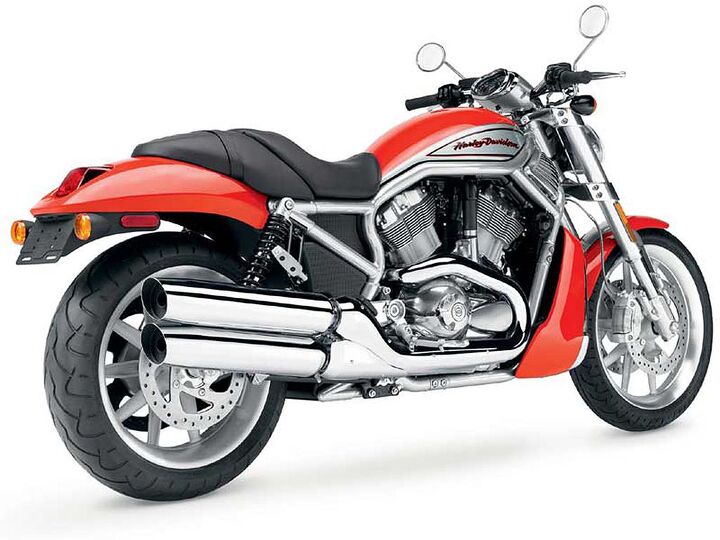
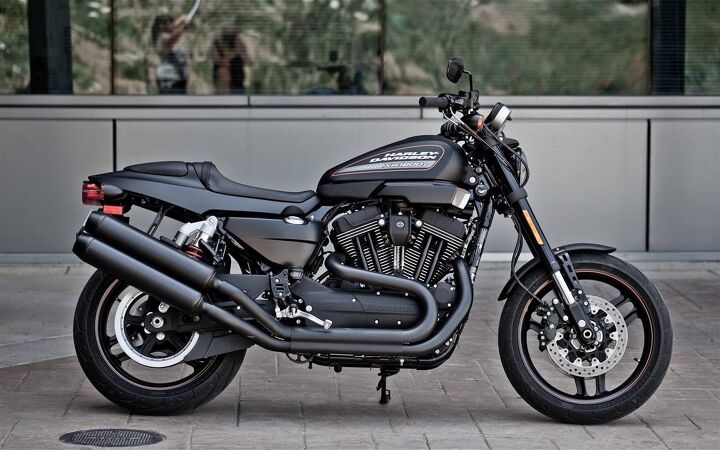
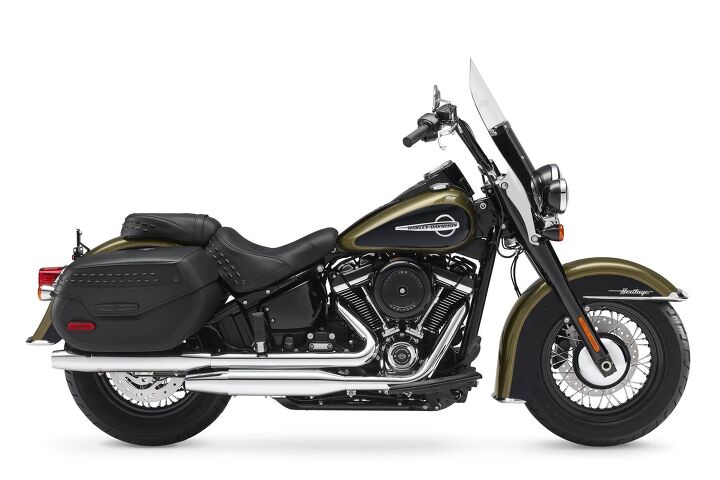
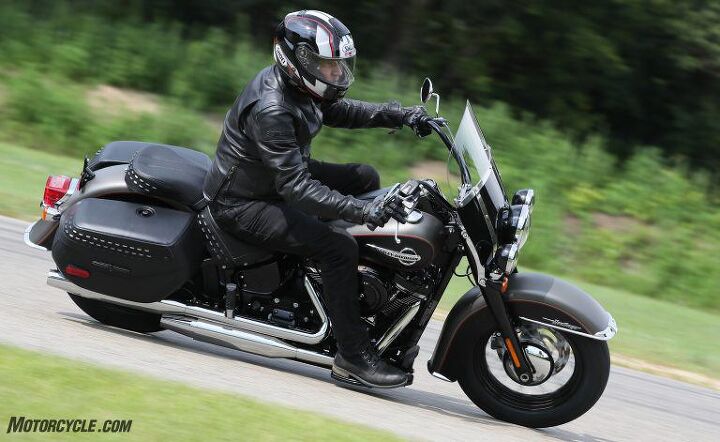
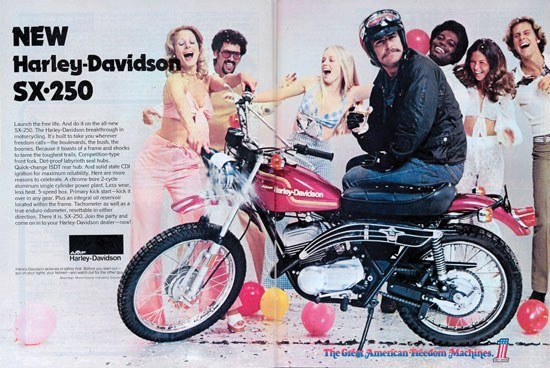
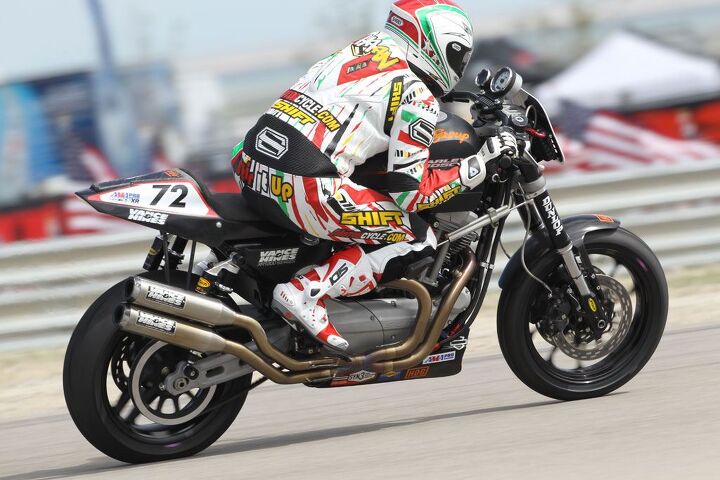
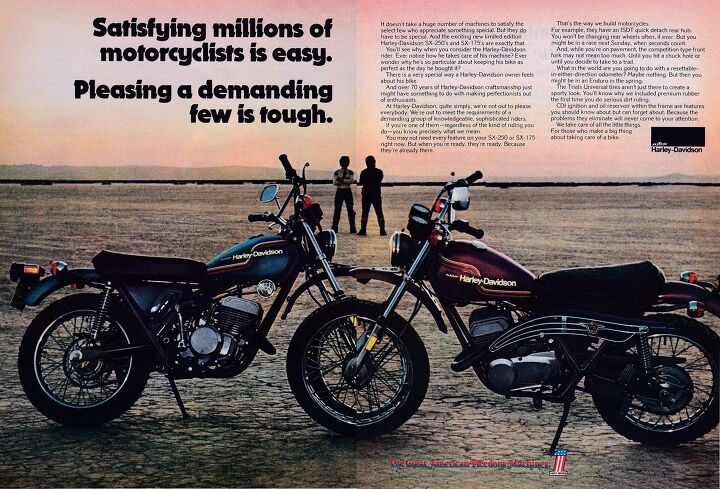

The post Top Five Underrated Harley-Davidsons appeared first on Motorcycle.com.
【Top 10 Malaysia & Singapore Most Beautiful Girls】Have you follow?
